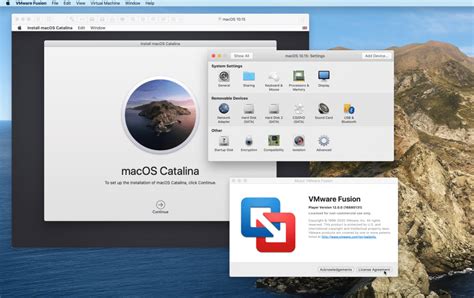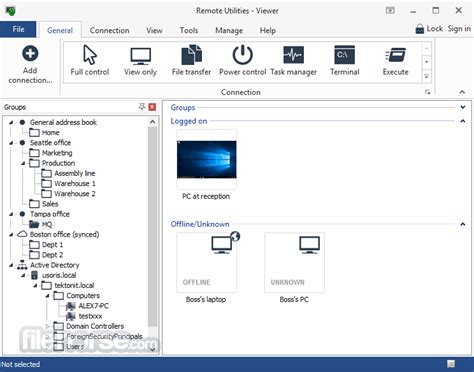Css shadow text
Author: n | 2025-04-24

css how to add double shadow to text; text shadow neon; css smooth text shadow; multiple text shadow; how to add shadow in css; css input text border shadow; how to add 2 text shadows; text shadow tailwindcss; tailwindcss text shadow; CSS Text Shadow Effect( cool) text shadow css generator; css text shadow; text shadow css; text shadow; text-shadow

CSS: Text-Shadow – Adding Shadows to Text
CSS text-shadow PropertyMore "Try it Yourself" examples below.Definition and UsageThe text-shadow property adds shadow to text.This property accepts a comma-separated list of shadows to be applied to the text.Show demo ❯Browser SupportThe numbers in the table specify the first browser version that fully supports the property. Property text-shadow 4.0 10.0 3.5 4.0 9.6 CSS Syntaxtext-shadow: h-shadow v-shadow blur-radius color|none|initial|inherit;Note: To add more than one shadow to the text, add a comma-separated list of shadows.Property ValuesMore ExamplesExampleText-shadow with a blur effect:h1 { text-shadow: 2px 2px 8px #FF0000;}Try it Yourself »ExampleText-shadow on a white text:h1 { color: white; text-shadow: 2px 2px 4px #000000;}Try it Yourself »ExampleText-shadow with a red neon glow:h1 { text-shadow: 0 0 3px #FF0000;}Try it Yourself »ExampleText-shadow with a red and blue neon glow:h1 { text-shadow: 0 0 3px #FF0000, 0 0 5px #0000FF;}Try it Yourself »Related PagesCSS tutorial: CSS Text ShadowHTML DOM reference: textShadow property ★ +1 Track your progress - it's free! css how to add double shadow to text; text shadow neon; css smooth text shadow; multiple text shadow; how to add shadow in css; css input text border shadow; how to add 2 text shadows; text shadow tailwindcss; tailwindcss text shadow; CSS Text Shadow Effect( cool) text shadow css generator; css text shadow; text shadow css; text shadow; text-shadow CSS text-shadow . CSS text-overflow . CSS text-transform . The text-shadow property adds a shadow effect to text. The details of the shadow are specified by a number of The CSS text-shadow property is used to apply shadow effects to text and its text-decorations. Multiple shadow effects are applied front-to-back; the first shadow is on top. This property is not supported by Internet Explorer.Values[]ValueDescriptionOptional, allowed before or after the values. If is not specified, a user agent-chosen color will be used. Gecko uses the value of the element's color property. Other browsers may differ. Valid color names or color codes are accepted. Required. These values set the shadow offset. specifies the horizontal distance. Negative values place the shadow to the left of the text. specifies the vertical distance. Negative values place the shadow above the text. If both values are 0, the shadow is placed behind the text (and may generate a blur effect when is set). Examples of lengths are px, em, etc.Optional. This is a value. If not specified, it will be 0. The higher this value, the bigger the blur, so the shadow becomes wider and lighter.HTML example:div style="text-shadow:5px 5px 10px white;">TEXTdiv>That produces:TEXTImage example: CSS examples:text-shadow:orange 0 -2px;produces: text-shadow:1px 1px 2px black, 0 0 1em blue, 0 0 0.2em blue; color:white; font:1.5em Georgia;produces:Comments
CSS text-shadow PropertyMore "Try it Yourself" examples below.Definition and UsageThe text-shadow property adds shadow to text.This property accepts a comma-separated list of shadows to be applied to the text.Show demo ❯Browser SupportThe numbers in the table specify the first browser version that fully supports the property. Property text-shadow 4.0 10.0 3.5 4.0 9.6 CSS Syntaxtext-shadow: h-shadow v-shadow blur-radius color|none|initial|inherit;Note: To add more than one shadow to the text, add a comma-separated list of shadows.Property ValuesMore ExamplesExampleText-shadow with a blur effect:h1 { text-shadow: 2px 2px 8px #FF0000;}Try it Yourself »ExampleText-shadow on a white text:h1 { color: white; text-shadow: 2px 2px 4px #000000;}Try it Yourself »ExampleText-shadow with a red neon glow:h1 { text-shadow: 0 0 3px #FF0000;}Try it Yourself »ExampleText-shadow with a red and blue neon glow:h1 { text-shadow: 0 0 3px #FF0000, 0 0 5px #0000FF;}Try it Yourself »Related PagesCSS tutorial: CSS Text ShadowHTML DOM reference: textShadow property ★ +1 Track your progress - it's free!
2025-04-18The CSS text-shadow property is used to apply shadow effects to text and its text-decorations. Multiple shadow effects are applied front-to-back; the first shadow is on top. This property is not supported by Internet Explorer.Values[]ValueDescriptionOptional, allowed before or after the values. If is not specified, a user agent-chosen color will be used. Gecko uses the value of the element's color property. Other browsers may differ. Valid color names or color codes are accepted. Required. These values set the shadow offset. specifies the horizontal distance. Negative values place the shadow to the left of the text. specifies the vertical distance. Negative values place the shadow above the text. If both values are 0, the shadow is placed behind the text (and may generate a blur effect when is set). Examples of lengths are px, em, etc.Optional. This is a value. If not specified, it will be 0. The higher this value, the bigger the blur, so the shadow becomes wider and lighter.HTML example:div style="text-shadow:5px 5px 10px white;">TEXTdiv>That produces:TEXTImage example: CSS examples:text-shadow:orange 0 -2px;produces: text-shadow:1px 1px 2px black, 0 0 1em blue, 0 0 0.2em blue; color:white; font:1.5em Georgia;produces:
2025-03-28CSS Box ShadowCSS box-shadow PropertyThe CSS box-shadow property is used to apply one or more shadows to an element.Specify a Horizontal and a Vertical ShadowIn its simplest use, you only specify a horizontal and a vertical shadow. The default color of the shadow is the current text-color.A element with a box-shadowExample Specify a horizontal and a vertical shadow: div{ box-shadow: 10px 10px;}Try it Yourself »Specify a Color for the ShadowThe color parameter defines the color of the shadow.A element with a lightblue box-shadowExample Specify a color for the shadow: div{ box-shadow: 10px 10px lightblue;}Try it Yourself »Add a Blur Effect to the ShadowThe blur parameter defines the blur radius. The higher the number, the more blurred the shadow will be.A element with a 5px blurred, lightblue box-shadowExample Add a blur effect to the shadow: div{ box-shadow: 10px 10px 5px lightblue;}Try it Yourself »Set the Spread Radius of the ShadowThe spread parameter defines the spread radius. A positive value increases the size of the shadow, a negative value decreases the size of the shadow.A element with a blurred, lightblue box-shadow, with a spread radius of 12pxExample Set the spread radius of the shadow: div{ box-shadow: 10px 10px 5px 12px lightblue;}Try it Yourself »Set the inset ParameterThe inset parameter changes the shadow from an outer shadow (outset) to an inner shadow.A element with a blurred, lightblue, inset box-shadowExample Add the inset parameter: div{ box-shadow: 10px 10px 5px lightblue inset;}Try it Yourself »Add Multiple ShadowsAn element can also have multiple shadows:Example div{ box-shadow: 5px 5px blue, 10px 10px red, 15px 15px green;}Try it Yourself »CardsYou can also use the box-shadow property to create paper-like cards: Hardanger, NorwayCSS Shadow PropertiesThe following table lists the CSS shadow properties: Property Description box-shadow Adds one or more shadows to an element text-shadow Adds one or more shadows to a text ★ +1 Track your progress - it's free!
2025-03-27Options for horizontal and vertical offsets, blur radius, and color. This property is a powerful tool for creating text effects that enhance readability or add a stylistic flair. It’s widely supported in modern browsers and can make text stand out on varied backgrounds. However, overuse or poor contrast can reduce legibility, so it’s important to use text-shadow judiciously for maximum effect.The Fun Way Of Looking At ItText-shadow in CSS is the voice coach for your text, adding depth and resonance to make words stand out. It’s perfect for creating that subtle echo or a bold shout, making your headings and slogans jump off the page. Text-shadow adds a layer of sophistication or fun to your typographic designs.Options: Horizontal shadow, vertical shadow, blur radius, shadow color.Browser Support: Broadly supported in newer browsers.Examples: text-shadow: 2px 2px 2px black;.Pros: Creates striking text effects, enhancing readability or aesthetic appeal.Cons: Can reduce legibility if overused or poorly contrasted.Overflow: The Content ControllerThe Boring TheoryThe overflow property in CSS handles how content is displayed when it exceeds its container’s bounds. It offers values like visible, hidden, scroll, and auto, providing different ways to deal with overflow content. This property is essential for creating clean, user-friendly interfaces where content management is crucial. While overflow is a basic and widely supported property, its misuse can lead to accessibility issues or hidden content.The Fun Way Of Looking At ItThe overflow property in CSS is the traffic controller for content, managing what happens when there’s too much to fit in the box. It decides whether to hide the excess, add scroll bars, or let it flow. With overflow, your content stays neat and navigable, no matter how crowded it gets.Options: visible, hidden, scroll, auto.Browser Support: Universal support.Examples: overflow: auto;.Pros: Manages how overflow content is handled, essential for layouts.Cons: Misuse can lead to unexpected layout issues or inaccessible content.Cursor: The Interaction IndicatorThe Boring TheoryCursor in CSS changes the mouse cursor’s appearance, signaling different interactions available on webpage elements. It offers a range of values, from the default arrow to pointers, crosshairs, and custom images. This property plays a significant role in user experience, guiding users through different interactive elements. While cursor changes can enhance usability, they should be used purposefully to avoid confusing users.The Fun Way Of Looking At ItCursor in CSS is the digital wand, transforming the mouse pointer to match the magic of the moment. It turns into a pointing hand, a text selector, or a spinning wheel, signaling the user what’s possible and where. This little icon is a big part of the user experience, guiding users through the enchanted forest of your website.Options: auto, pointer, crosshair, text, and more.Browser Support: Excellent across all browsers.Examples: cursor: pointer;.Pros: Enhances user
2025-04-06